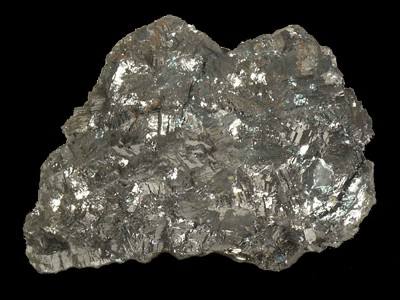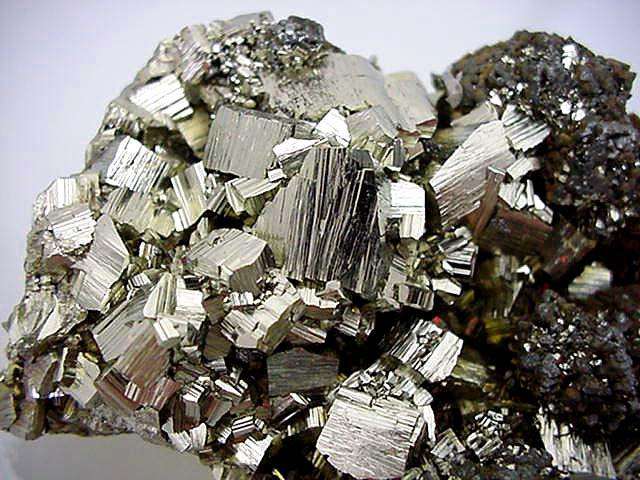First, materials and methods
1. Set-up of cages The cages are installed in the Dong'an Reservoir of Shengli Petroleum Administrative Bureau. There are islands in the middle of the reservoir, surrounded by stones around the island and around the reservoir. The area is 500 hectares. The water is introduced into the Yellow River. The water quality is good and there is no industrial pollution. The average water depth is 5.0 meters or more, the water transparency is 0.8-1.5 meters, the pH value is 7.0-7.5, and the cage is set at the leeward position of the reservoir and the water depth is 5.0 meters or more.
2. Net cage structure The cage size is 10 meters, 10 meters and 5 meters. It has a double layer structure. The inner layer is made of 20 mesh polyethylene screen cloth, and the outer layer and cover mesh are made of 33 polyethylene mesh sheets. The mesh is 3.0. cm.
3. Net cage setup The cage frame is made by welding 2 inch old steel tubes and plastic tubes to prevent abrasion of the cages. The cages can be moved up and down. The height above the water surface of the cages should not be less than 0.5 meters. The cages should be seeded after 15 days.
4. The fry fry used for the source of the fry was all from the natural fish fry that was acquired without injury and disease, with an average size of 4 g/tail.
5. Fish fry boxing fry into the box as far as possible the same specifications, the amount of one-time enough to put a total of 8600 tail, into the box for August 9 to 10, 2002.
6. Feeding and management (1) Feeding Fresh fish is used during the cultivation process. The fresh fish in the seawater must be soaked in fresh water. The ground fish is used to grind up and feed the miscellaneous fish in the early stage. The fish block is then determined according to the size of the fish.
(2) Taming and feeding the young fish into the box after the first day to stop eating, the second day began to tame food, tame the time to tap the bait basin sound is a fixed signal, to form a conditional reflex, minced miscellaneous The fish is thrown at the center of the cage. Feeding three times a day, respectively, 8:00,12:00,16:00, the amount of feed to fish no longer up and grab food as the standard. The bad weather in the wind reduced feeding, and the lunar calendar stopped feeding in late September.
(3) Fighting for Fish Diseases Frying the fish into the container requires immersing in 4% saline for 10 minutes. In the process of cage cultivation, dip insects, bleaching powder, copper sulphate, salt, etc. were used to hang bags diagonally at the cages.
(4) Routine management 1 Keep the water in the tank fresh. After the fish is put out of the box, clean the cage once a day and move the position to facilitate the exchange of convection inside and outside the tank. 2 Regularly check if the cage is damaged and there are loopholes to prevent escape. Observe the feeding and activity of the fry and adjust the feeding amount in time. Timely salvage sick fish and impurities.
(5) Wintering management During the wintering period, the cage is dive to the bottom of the reservoir, so that the bottom of the tank is slightly higher than the bottom plane. It is firmly fixed and cannot be pulled up by the storm. Put some water plants in the cage and use 1 to 2 to vent the reed. . Do not feed bait during wintering season.
Second, the test results
Harvested on March 8, 2003, a total of 8,444 species of fish were harvested, with an average size of 183 grams/tail, a yield of 1,546 kilograms, an output value of 3,1920 yuan, and a profit and tax of 18,000 yuan.
1. The key to fostering young seedlings of cages is the amount of one-time release. The size of fish fry is as consistent as possible, different specifications, and different time for seedlings laying down. Severe mutual grave food results in a decrease in survival rate. The fish fed must be fresh.
2. When the fry is first put into the box, because it does not adapt to the environment of the cage, it will cause bodily injury, ulceration, impact on feeding, and even cause death due to collision. Therefore, the preliminary training measures after entering the box are very critical.
3. In the process of fry cultivation, the individual size is prone to differences, and the phenomenon of mutual-residual food is observed. The survival rate is reduced. Therefore, once the phenomenon of individual size differentiation occurs, the fish should be sifted and thinned in time to maintain the same size and size of the fry in the box.
4. The use of cages in the reservoir to grow the seedlings of the Chinese wolfberry grows very fast. The density of the larvae should be determined according to the production conditions. The maximization of economic benefits is the center, and there is no need to deliberately pursue high density.
1. Set-up of cages The cages are installed in the Dong'an Reservoir of Shengli Petroleum Administrative Bureau. There are islands in the middle of the reservoir, surrounded by stones around the island and around the reservoir. The area is 500 hectares. The water is introduced into the Yellow River. The water quality is good and there is no industrial pollution. The average water depth is 5.0 meters or more, the water transparency is 0.8-1.5 meters, the pH value is 7.0-7.5, and the cage is set at the leeward position of the reservoir and the water depth is 5.0 meters or more.
2. Net cage structure The cage size is 10 meters, 10 meters and 5 meters. It has a double layer structure. The inner layer is made of 20 mesh polyethylene screen cloth, and the outer layer and cover mesh are made of 33 polyethylene mesh sheets. The mesh is 3.0. cm.
3. Net cage setup The cage frame is made by welding 2 inch old steel tubes and plastic tubes to prevent abrasion of the cages. The cages can be moved up and down. The height above the water surface of the cages should not be less than 0.5 meters. The cages should be seeded after 15 days.
4. The fry fry used for the source of the fry was all from the natural fish fry that was acquired without injury and disease, with an average size of 4 g/tail.
5. Fish fry boxing fry into the box as far as possible the same specifications, the amount of one-time enough to put a total of 8600 tail, into the box for August 9 to 10, 2002.
6. Feeding and management (1) Feeding Fresh fish is used during the cultivation process. The fresh fish in the seawater must be soaked in fresh water. The ground fish is used to grind up and feed the miscellaneous fish in the early stage. The fish block is then determined according to the size of the fish.
(2) Taming and feeding the young fish into the box after the first day to stop eating, the second day began to tame food, tame the time to tap the bait basin sound is a fixed signal, to form a conditional reflex, minced miscellaneous The fish is thrown at the center of the cage. Feeding three times a day, respectively, 8:00,12:00,16:00, the amount of feed to fish no longer up and grab food as the standard. The bad weather in the wind reduced feeding, and the lunar calendar stopped feeding in late September.
(3) Fighting for Fish Diseases Frying the fish into the container requires immersing in 4% saline for 10 minutes. In the process of cage cultivation, dip insects, bleaching powder, copper sulphate, salt, etc. were used to hang bags diagonally at the cages.
(4) Routine management 1 Keep the water in the tank fresh. After the fish is put out of the box, clean the cage once a day and move the position to facilitate the exchange of convection inside and outside the tank. 2 Regularly check if the cage is damaged and there are loopholes to prevent escape. Observe the feeding and activity of the fry and adjust the feeding amount in time. Timely salvage sick fish and impurities.
(5) Wintering management During the wintering period, the cage is dive to the bottom of the reservoir, so that the bottom of the tank is slightly higher than the bottom plane. It is firmly fixed and cannot be pulled up by the storm. Put some water plants in the cage and use 1 to 2 to vent the reed. . Do not feed bait during wintering season.
Second, the test results
Harvested on March 8, 2003, a total of 8,444 species of fish were harvested, with an average size of 183 grams/tail, a yield of 1,546 kilograms, an output value of 3,1920 yuan, and a profit and tax of 18,000 yuan.
1. The key to fostering young seedlings of cages is the amount of one-time release. The size of fish fry is as consistent as possible, different specifications, and different time for seedlings laying down. Severe mutual grave food results in a decrease in survival rate. The fish fed must be fresh.
2. When the fry is first put into the box, because it does not adapt to the environment of the cage, it will cause bodily injury, ulceration, impact on feeding, and even cause death due to collision. Therefore, the preliminary training measures after entering the box are very critical.
3. In the process of fry cultivation, the individual size is prone to differences, and the phenomenon of mutual-residual food is observed. The survival rate is reduced. Therefore, once the phenomenon of individual size differentiation occurs, the fish should be sifted and thinned in time to maintain the same size and size of the fry in the box.
4. The use of cages in the reservoir to grow the seedlings of the Chinese wolfberry grows very fast. The density of the larvae should be determined according to the production conditions. The maximization of economic benefits is the center, and there is no need to deliberately pursue high density.
Refers to the trading of minerals in international trade. Minerals in international trade refer to the four major categories of iron ore, non-ferrous metal ores, rare-metal ores and non-metallic Mineral Products.

Mineral classification:
- According to the genesis and formation conditions of mineral resources, it is divided into endogenous minerals, exogenous minerals and metamorphic minerals.
- According to the mineral composition and structural characteristics, is divided into inorganic minerals and organic minerals;
- According to the output status of minerals, it is divided into solid minerals, liquid minerals and gas minerals.
- According to the characteristics of the mineral and its main purpose, it is divided into energy minerals, metal minerals, non-metallic minerals and water and gas minerals.

Our company mainly engaged in
- Ferroalloy ore
- Ferrosilicon
- Silicon manganese
- Graphite oil coke
- Silicon carbide
- Activated carbon.
If you have cooperation intention, please contact us.
Mineral Products Trading,Mineral Products,Steel Products
NINGXIA IFA INDUSTRY&TRADE CO.LTD , http://www.ifagoup.com